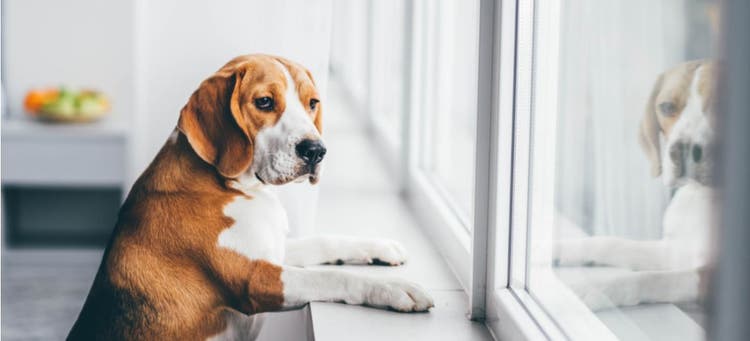
Addressing Your Dog’s Separation Anxiety
No pet parent likes leaving their dog alone. Goodbyes are especially tough when pups suffer from separation anxiety.
COVID-19 and Separation Anxiety
Millions of pets have entered new homes throughout the COVID-19 pandemic. As the country continues to reopen, first-time and veteran pet parents alike are concerned that the quality time spent during the pandemic will result in negative side effects like separation anxiety. Returning to normal life is bound to be scary – for both dog lovers and their pets.
Other common causes of separation anxiety include:
- Changes in the household (such as births, deaths, or the introduction of new pets)
- Changes to typical schedules and routines
- Moves to new places
Signs of Separation Anxiety in Pets
- Excessive barking, whining, or howling
- Inappropriate elimination
- Chewing, digging, and/or scratching inappropriately
- Attempts to escape the house
- Pacing back and forth and other obsessive, repetitive behaviors
- Panting or salivating excessively
In many instances, these anxious behaviors will be at their worst when you’re not around. Pet parents with anxious dogs often come home to learn that what started out as digging, pacing, and barking evolved into tearing up the furniture in their absence.
4 Ways to Address Separation Anxiety
Don’t worry! There are a number of steps you can take to reduce or eliminate feelings of separation anxiety. Whether you’re getting ready for a vacation, heading back to the office after a long absence, or just looking to address everyday anxiety, give these methods a try.
Change Your Routine
Your pet can usually sense when you’re about to leave the house. They’ve come to associate a number of sights and sounds with these departures. These alone can trigger anxious reactions like whining, barking, and repetitive (often destructive) behaviors. Switch up your routine for departures and arrivals to avoid triggering these behaviors. You might consider leaving the house through a new door or simply avoiding drawing attention to departures.
Get More Exercise
A dog who’s tired out from playing won’t have as much energy for acting out. If you’re worried about separation anxiety, try scheduling walks and playtime to ensure dogs are too tired for anxious behavior by the time you leave the house.
Offer a Distraction
Try distracting your dog with toys that offer physical and mental stimulation. Puzzle toys or toys that can be paired with food could prove especially useful. A pleasant environment, filled with familiar objects and scents could also divert your pup’s attention and discourage anxious behavior. Try leaving out some clothes where your pet can smell them while you’re gone.
Talk to Your Vet
If separation anxiety outlasts repeated efforts to address it, have a conversation with your veterinarian. They can help you determine whether your dog’s anxiety is related to a more serious underlying health condition. Additionally, they could help out by offering training suggestions, prescribing calming medications, or putting you in contact with canine training experts.